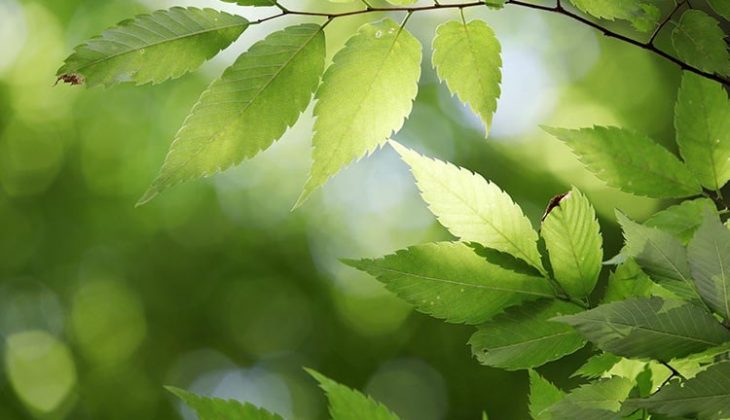Last updated on October 23rd, 2023 at 09:01 pm

One of the most important questions to ask yourself when creating your plant environment is: where will the plants go in your garden in Macon, Chauffailles or Charolles?
And how much sunlight will there be?
Also, while watering and soil type are more adjustable, the amount of sunlight in your outdoor space is something that is difficult to change.
In fact, every plant needs a particular type of sunlight. Some have evolved to tolerate direct sunlight without burning while others have learned to cope in thick shade.
So why do plants need sunlight?
What strategies have plants evolved to adapt to excess or lack of light?
What are the different sun exposures that plants need in the garden?…
Plants need sunlight
Plants absorb sunlight to transform it into energy; they need it to feed and grow. Isn’t it said that plants are solar-powered organisms? This fundamental principle of plant life is called photosynthesis. Plants use the sun’s energy to make sugar from carbon dioxide and water. Thus, the sugar molecules created by photosynthesis and the minerals absorbed from the soil feed and strengthen the plant. It can therefore be said that sunlight is essential for the proper development of plants in your garden.
Plant adaptation to sun and shade
Plant strategies in the shade
Plants that grow naturally in the shade (undergrowth, glades, etc.) have developed a short-lived and shifted vegetative cycle. These undergrowth plants produce their foliage in winter or spring. Then, they bloom in the summer before going into dormancy during the summer period. Snowdrops, spring anemones and wood hyacinths are among these “fleeting springers”.
Another strategy for adapting to shade is to flower in the fall. Thus, as soon as the first rains come, the plants produce their foliage and then disappear in late spring and summer. This is the case for cyclamen, sternbergia and colchicum.
Plant strategies to cope with strong sunlight

Many plants that grow in dry environments (scrubland, steppe, causse, …) have adapted their vegetative organs to withstand excess sun and heat.
Thus, some leaves have developed a thick wall where the stomata (pores) are hidden. This is the case of oleanders, pittosporum, phormium and eucalyptus.
Other plants have covered their leaves with a carpet of dense hairs. This insulating layer of “velvet” protects the stomata from heat while reflecting the sun’s rays. (Lavenders, Santolines, Stachys, …)
Another strategy is to reduce the leaf surface in order to limit evaporation. Thymes and grasses, for example, with their tiny leaves, have adopted this solution.
Releasing essential oils to form a fog in order to screen the sun is an approach used by aromatic plants. This is the case of oregano, thyme, sage but also cistus and eucalyptus.
Finally, other plants are capable of retaining water in their tissues: they are called succulent plants. Orpins, sedums, houseleeks or other delospermas can easily withstand excessive sun and heat.
The different types of exposure in your garden
Exposure to the sun in different parts of your garden in Paray-le-Monial or Marcigny allows you to find the right plant that will grow in the right place. Moreover, in Burgundy, we know that a number of hours of sunshine that lengthens announces heat. On the other hand, certain conditions in the shade can cause the temperature to drop by 10°C and increase humidity. Thus, to create a successful plant environment, the sun exposure in your garden must correspond to the needs of the plants you will install.
Full sun exposure
A place in your Cluny or Roanne garden is considered “full sun” when it receives direct sunlight for at least 6 hours a day. Of course, there are many plants that are satisfied with more than 6 hours of sunlight and are able to withstand dry conditions once established. But once your full-sun plants are established, Feeling Jardins recommends that you apply an organic or mineral mulch. This will help the plants keep their roots cool and conserve soil moisture.

Half-shade / half-sun exposure
These two terms are often associated together and mean a need for 3 to 6 hours of direct sunlight per day. Thus, a semi-sunny plant will benefit from the right number of hours of sunlight to favor its production of flowers and fruits. And, a semi-shade plant will benefit from a little relief from the intense heat of the sun.
The “Half Sun / Half Shade” category includes a number of plants. Also, if you doubt the need for sunlight in certain plants, you can test or experiment by installing them in your garden in La Clayette or Dompierre-les-Ormes. Or you can also contact your landscape gardener Feeling Jardins who, with his experience and knowledge, will be able to find the ideal plant in the right place.
Full Shade Exposure
“Full shade” does not mean “no sun”. It means that shade plants can live with less than 3 hours of direct sunlight per day. The rest of the day, the light can be filtered by the shade of a tree, wall or your house.
What to remember: Plants need sunlight to feed and grow. They have different needs in terms of the amount of direct sunlight: some plants prefer a lot of sunlight and have developed ways to resist excess sun and heat. On the other hand, other plants fear excess sunlight and have evolved to survive in shady environments.


